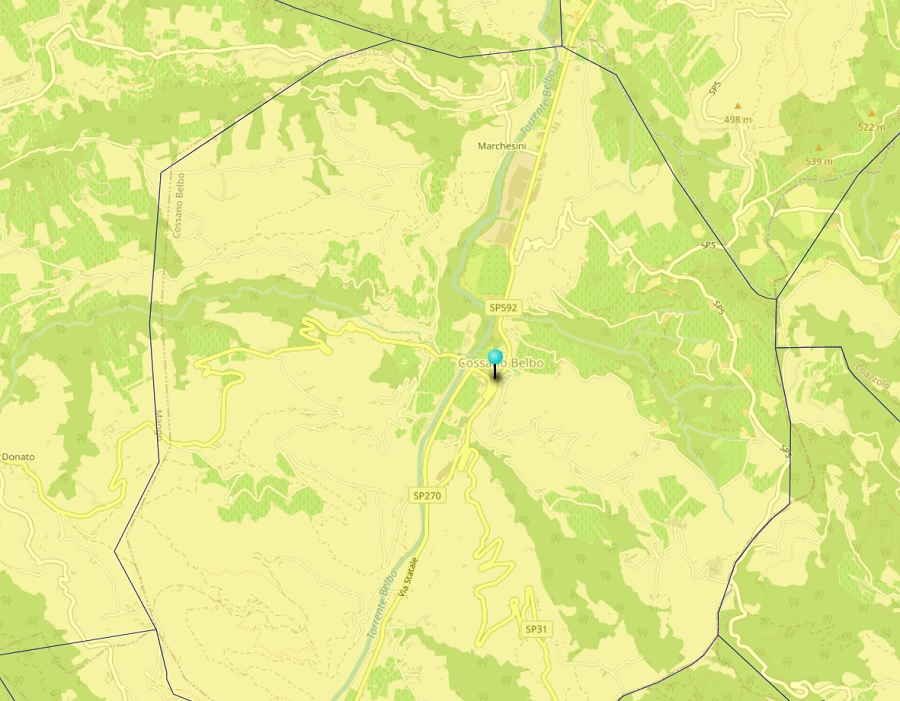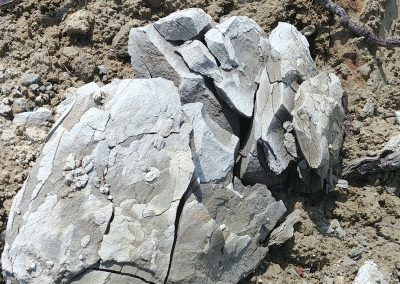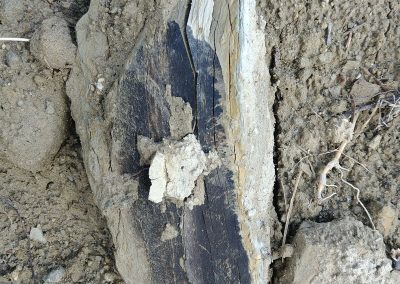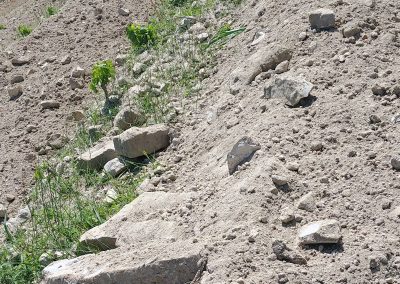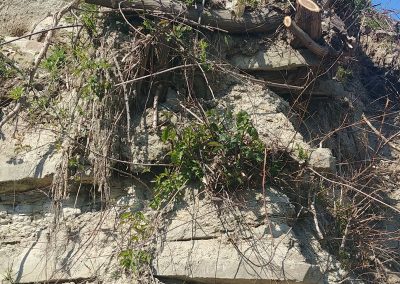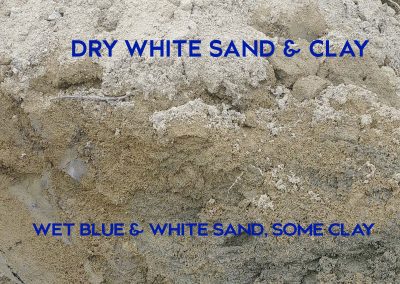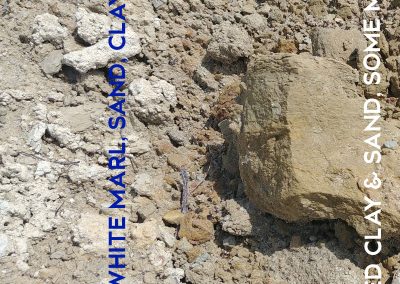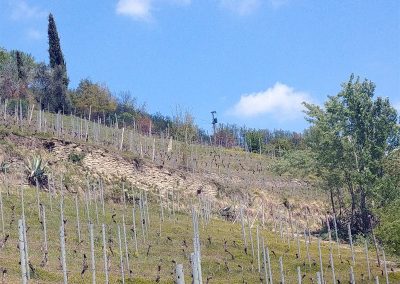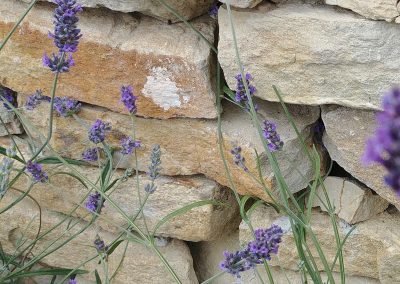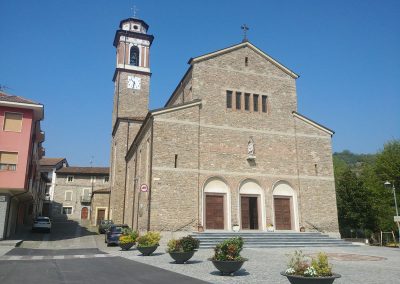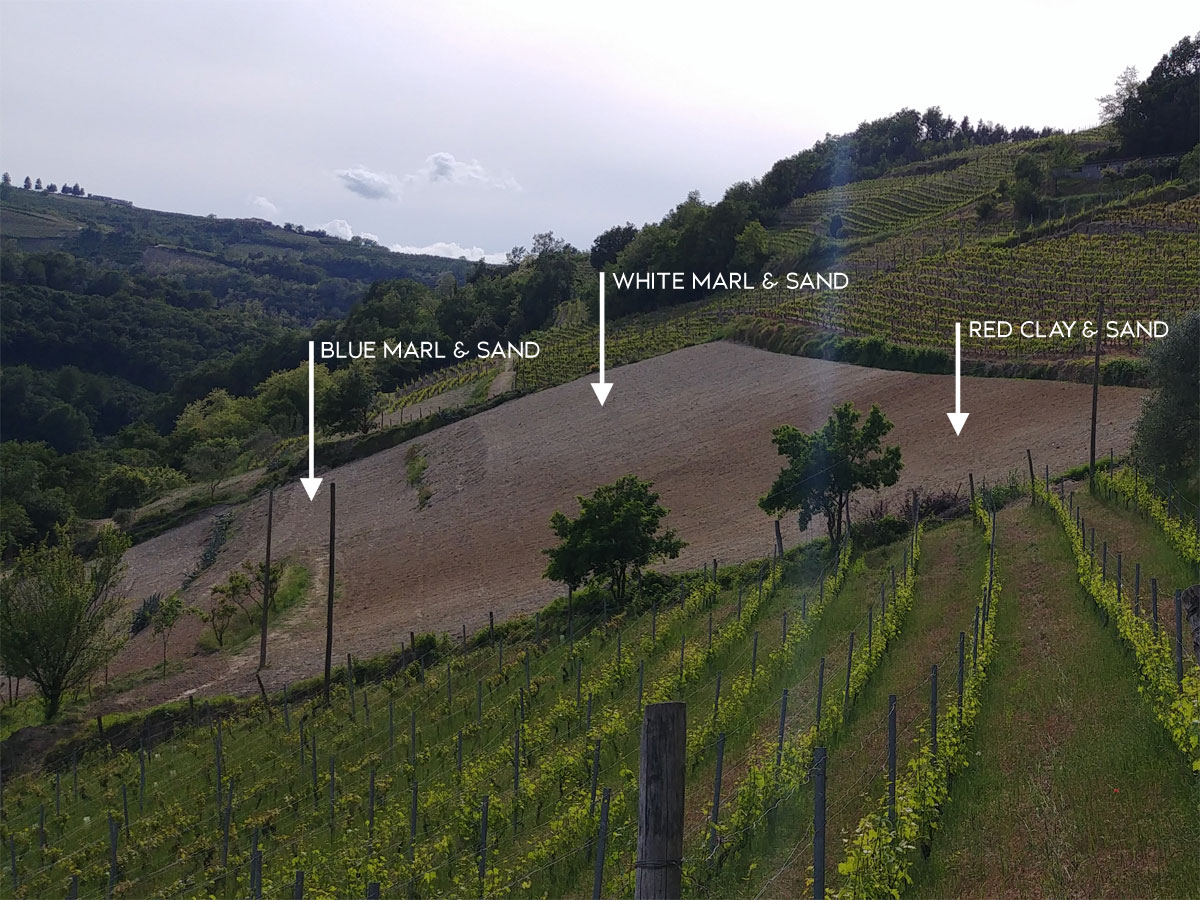|
COSSANO BELBO (SOILS)
|
|
(continues from the previous page)
|
Cossano Belbo is located in the center of the Belbo Valley, in the lower Langa, 30 km away from Asti and Alba, in the easternmost part of the province of Cuneo. Its territory is about 21 sq km (8 sq miles). The area is an ancient marine plateau which emerged thanks to the formation of the Alps first and then of the Apennines, which over the ages has been profoundly shaped by the erosion of rivers, giving origin to a predominantly hilly conformation “LANGA” (strips of land) with the Belbo stream, which flows northwards towards Tanaro river.
QUILA’s main vineyard (map) is in the NW part of Cossano, on the brim of an erosion cliff shaped by the stream Tamiano that flows into Belbo near the village itself. The soils in Cossano are of tertiary age origin (Serravalle sandstones & Cassinasco facies formed during the Middle Miocene) and form part of the so-called Ligurian-Piedmontese Sedimentary Basin, characterized by alternating layers of clayey marl, more or less cemented sandstones of medium-fine grain and sands in thin layers (usually centimeters) and thicker layers of silty marls (usually few decimeters).
The structural framework can be traced back to a monocline structure, with immersion of the layers towards NW and an inclination of 5 ° -10 °.
The sandstones are widely used as building material for houses, vineyard walls and drainage channels which are essential given the steepness of the hills. Even the Parish Church of Cossano Belbo named after San Giovanni Batista & San Nicolao is entirely built with the local sandstones.
The sand that’s predominant in the upper soil horizons together with the steep slopes guarantees good drainage. The silty marl which lays from 60 to 90 cm (2-3 feet) from the surface retains better the rainwater and together with the underground waters, abundant in some parts of our vineyard, creates a good water reserve and also protect the upper horizons from overheating. These factors, together with the light wind that blows nearly every afternoon during the growing season, the Southern exposition and the elevation above sea level (350-420 m | 1150 – 1400 ft) create perfect pedo-climatic conditions for growing vines and permits smooth and slightly belated grape maturation (7 to 10 days later compared to the same varietals from other vineyards in Langhe & Monferrato that we also work with).

